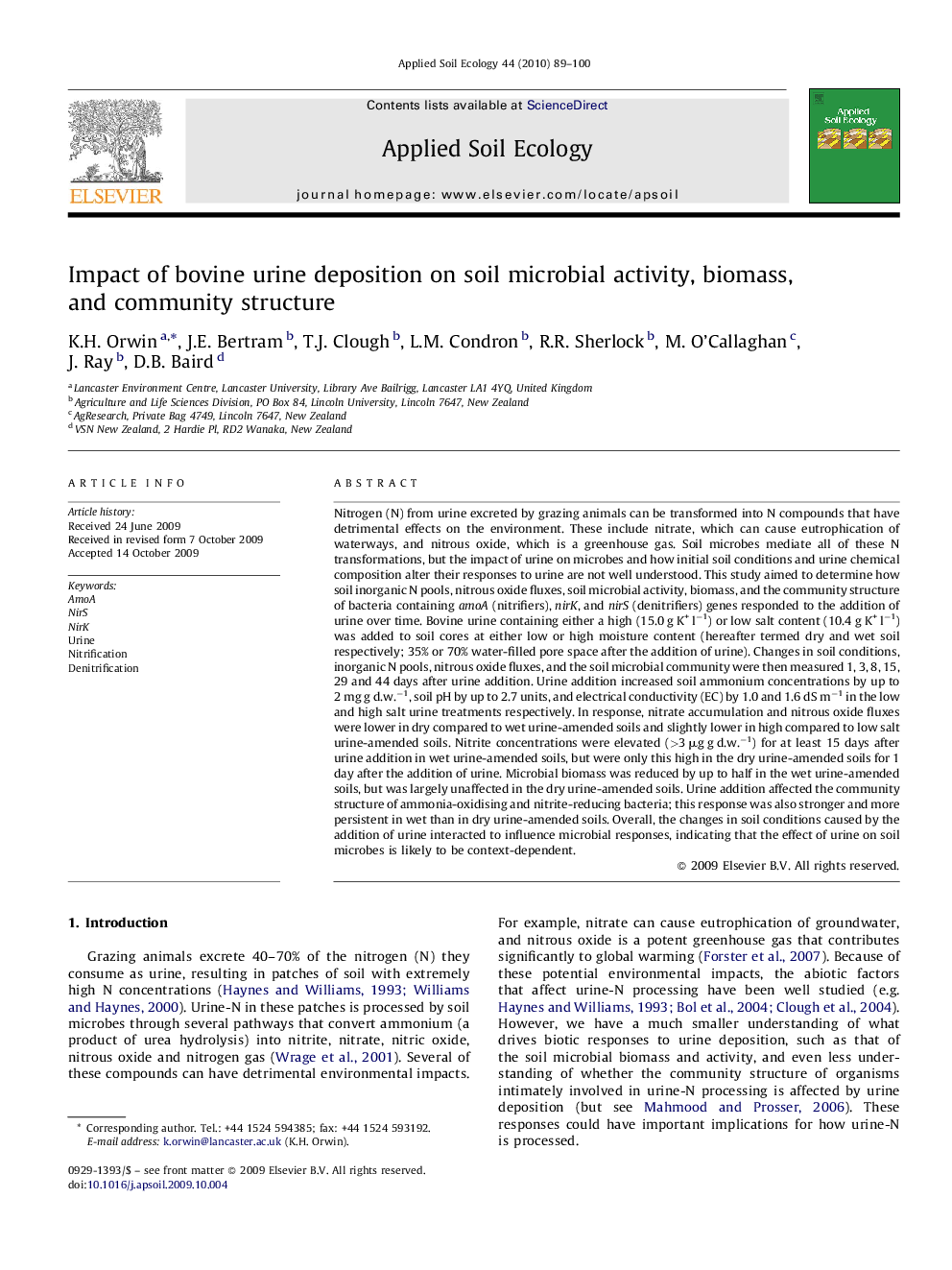| کد مقاله | کد نشریه | سال انتشار | مقاله انگلیسی | نسخه تمام متن |
|---|---|---|---|---|
| 4383040 | 1304244 | 2010 | 12 صفحه PDF | دانلود رایگان |

Nitrogen (N) from urine excreted by grazing animals can be transformed into N compounds that have detrimental effects on the environment. These include nitrate, which can cause eutrophication of waterways, and nitrous oxide, which is a greenhouse gas. Soil microbes mediate all of these N transformations, but the impact of urine on microbes and how initial soil conditions and urine chemical composition alter their responses to urine are not well understood. This study aimed to determine how soil inorganic N pools, nitrous oxide fluxes, soil microbial activity, biomass, and the community structure of bacteria containing amoA (nitrifiers), nirK, and nirS (denitrifiers) genes responded to the addition of urine over time. Bovine urine containing either a high (15.0 g K+ l−1) or low salt content (10.4 g K+ l−1) was added to soil cores at either low or high moisture content (hereafter termed dry and wet soil respectively; 35% or 70% water-filled pore space after the addition of urine). Changes in soil conditions, inorganic N pools, nitrous oxide fluxes, and the soil microbial community were then measured 1, 3, 8, 15, 29 and 44 days after urine addition. Urine addition increased soil ammonium concentrations by up to 2 mg g d.w.−1, soil pH by up to 2.7 units, and electrical conductivity (EC) by 1.0 and 1.6 dS m−1 in the low and high salt urine treatments respectively. In response, nitrate accumulation and nitrous oxide fluxes were lower in dry compared to wet urine-amended soils and slightly lower in high compared to low salt urine-amended soils. Nitrite concentrations were elevated (>3 μg g d.w.−1) for at least 15 days after urine addition in wet urine-amended soils, but were only this high in the dry urine-amended soils for 1 day after the addition of urine. Microbial biomass was reduced by up to half in the wet urine-amended soils, but was largely unaffected in the dry urine-amended soils. Urine addition affected the community structure of ammonia-oxidising and nitrite-reducing bacteria; this response was also stronger and more persistent in wet than in dry urine-amended soils. Overall, the changes in soil conditions caused by the addition of urine interacted to influence microbial responses, indicating that the effect of urine on soil microbes is likely to be context-dependent.
Journal: Applied Soil Ecology - Volume 44, Issue 1, January 2010, Pages 89–100